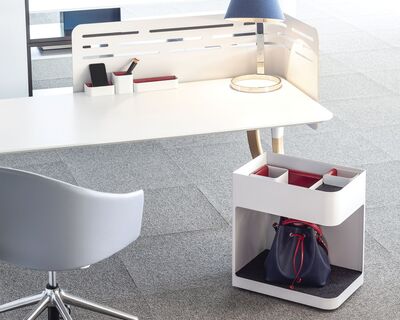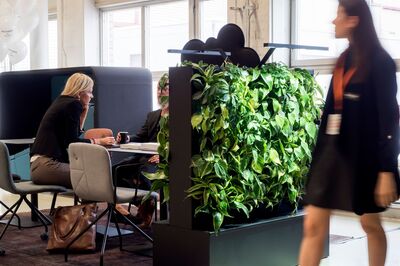Are you looking for an easy way to boost productivity and morale in your office? Rethink your office design! It may come as a surprise, but the relationship between office design and productivity is a symbiotic one that can hugely impact how productive, creative, comfortable, and ultimately happy your employees are.
A well-planned workspace not only makes it easier to complete tasks faster and more efficiently, but it can also encourage employees to work together more collaboratively while staying engaged and focused. Disregarding the importance of office design, on the other hand, can lead to higher levels of stress and lower productivity among your staff—and wind up costing you time and money.
The Evolving Relationship Between Office Design and Productivity
Office design has come a long way from the bullpens and cubicle farms of years past, but there is still room for improvement. A century ago, companies utilized large open floor spaces, with desks facing a supervisor—a concept developed by mechanical engineer Frederick Taylor, who saw this as a way to maximize efficiency.
The advent of air conditioning and fluorescent lighting in the 1930s and 1940s meant that employees could work in the middle of a room without having to be close to a window or plug outlet for light or ventilation. Managers still had offices with windows, but workers often sat out in the open. The ’60s brought the three-walled cubicle, giving workers a bit more privacy and freedom to move around as they pleased, though managers increasingly used this to cram as many people into as little space as possible.
But in response to the technological innovation of recent decades, companies have begun reverting back to open office plans to encourage more collaboration and communication. While this trend has its advantages, it has also been shown to cause more distractions for workers. So, where does that leave us today? Many companies are now looking for a happy medium between open, collaborative spaces that allow for brainstorming and creative thinking and more private areas that don’t disrupt employees’ attention and focus.
Design Essentials to Boost Productivity
More than ever, it’s essential to be intentional about how you design your office space and think about how it affects employee workflow, engagement, and productivity. Here are five design essentials every workplace needs to boost productivity:

Flexible working spaces
Think about your employees’ varying needs and preferences for their workspace throughout the day and utilize a mix of spaces to accommodate them. Include breakout areas where they can collaborate and interact with colleagues and more private zones they can retreat to when they need to hunker down and focus. Encourage movement from space to space and use movable furniture that can be easily reconfigured based on the moment’s needs.

Ergonomic workstations
Provide adjustable chairs, desks, and computer screens employees can adapt to suit their height and comfort level. This can help reduce physical stressors like eye strain, back pain, and fatigue, which can hamper productivity. Also, make it easy for employees to personalize their core workspace with items that reflect their interests and keep them engaged and rejuvenated.

Idea organization
Disorganized, chaotic workspaces make it harder for employees to concentrate and complete their work. Visible clutter can distract them from tasks and even cause anxiety. Make sure to provide employees with adequate storage and filing space. Keep movable whiteboards handy, so teams have a place to quickly jot their ideas down and keep track of them without interrupting their workflow.

Environmentally friendly features
Inadequate lighting, poor air quality, and high noise levels are detrimental to employee health and productivity. Use natural and adjustable lighting where possible to minimize eye strain and headaches for workers. Ensure your office has proper ventilation and raise the room temperature just a bit to boost comfort. Place plants strategically around the office to improve airflow. Install acoustic controls, like sound-canceling systems that emit white noise, to drown out noise and chatter in high-traffic spots. You can even use freestanding screens, partitions, or lounge furniture to absorb sound and reduce distractions.

Inspiring scenery
Pay attention to the color, decor, and materials in your office. Do they reflect your branding or mission as an organization? Use neutral colors like blue or green to create a calming vibe with pops of more vibrant colors to energize spots throughout the office. Install artwork that will inspire creativity and curiosity. Warm-up your office atmosphere by mixing metallic materials with wood and fabrics. Incorporate biophilic features, like living plant walls, to ease anxiety.
Bottom line
Go beyond the basics of what employees need and think about simple tweaks you can make to help them feel creative, inspired, engaged, and productive when they come to work.
Come see these ideas in person!
Book a tour of our showroom for a complimentary design consult.


